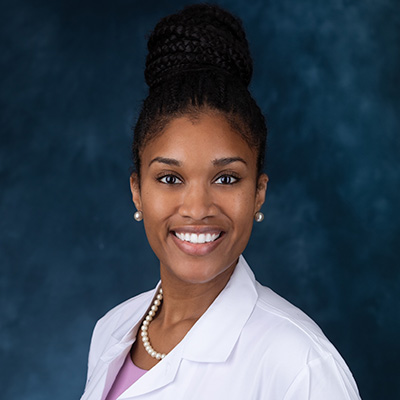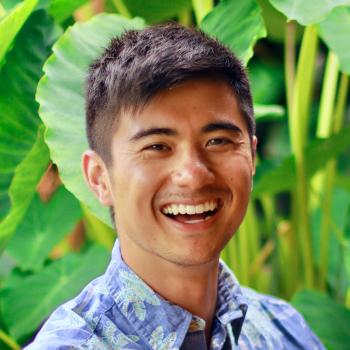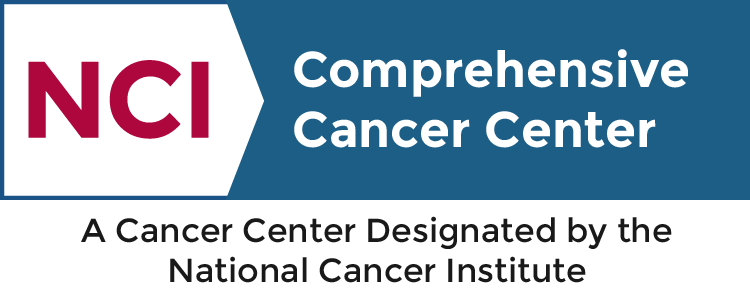In honor of the 2024 World Cancer Day theme “Close the Care Gap,” we are highlighting a few Stanford cancer researchers working to close the care gap in diverse populations through screening, clinical trials, prevention, and community engagement.

Candice Thompson, MD
Bridging gaps in breast cancer care
In 2023, the American Cancer Society reported an estimated 300,590 new cases of breast cancer and 43,700 breast cancer-related deaths in the United States. Thanks to advancements in treatments, earlier detection, and an increase in awareness, breast cancer deaths have decreased significantly over the past three decades. However, a persistent mortality gap persists between Black and white women. Specifically, Black women face a > 40% higher mortality rate despite having a 4% lower incidence rate of breast cancer than white women. This dichotomy underscores the urgent need to close the care gap.
The breast cancer care gap stems from a complex interplay of social, economic, behavioral, and biological factors. Black women are more likely to have dense breast tissue, live in adverse environments (food deserts, pollutants, etc.), and suffer from obesity. Each of these factors contributes to an elevated risk of developing breast cancer. Black women are disproportionately affected by aggressive breast cancers, including triple-negative breast cancer (TNBC) and inflammatory breast cancer (IBC), and are often diagnosed at younger ages with advanced disease. Moreover, inadequate health insurance/healthcare or poor access to care can further widen the care gap by detrimentally reducing screening, follow-up care, and treatment.
Early detection
Early detection plays a crucial role in narrowing the breast cancer mortality gap among Black women. Recent research suggests that Black women aged 40–45 are more likely to have their cancer identified during their initial mammogram. Moreover, the increased incidence of breast cancer under the age of 35 in Black women underscores the importance of initiating screening mammography by age 40 or earlier. The American Cancer Society reports a 99% five-year relative survival rate for localized, early-detected breast cancer, along with lower cancer recurrence rates. These figures serve as a driving force for Candice Thompson, MD, a clinical assistant professor of surgery, and underscore the significance of early detection in shaping her commitment to tackling barriers to screening, diagnosis, and access to treatment and clinical trials.
“The school system does not teach us the basics when it comes to breast cancer, such as how to perform a self-breast exam or when to start getting mammograms. Education is key. Many patients in underserved populations lack education surrounding health, transportation to doctors’ appointments, childcare, and the ability to take time off work. We need to help address these barriers to ensure patients receive timely screening,” states Thompson.
In collaboration with SCI Director Emeritus and Senior Advisor Beverly Mitchell, MD, Thompson is organizing a free mammography screening pilot event for underserved populations in the Oakland-Berkeley Area this spring. By bringing breast cancer screenings directly to the East Bay, the event hopes to address transportation and financial barriers within the local community. The pilot's objective is to enroll 20 women needing these essential services, with the broader goal of establishing quarterly free screenings.
Thompson emphasizes, “One out of every eight women will have breast cancer in her lifetime, so there's a possibility that we may find something. We are committed to providing follow-up care for those participants if any abnormalities are detected.”
Empowering the community through education
Thompson also hosts monthly community educational seminars about breast health, addressing early detection, genetics and genomics, nutrition, and breast cancer treatment options. About 30% of breast cancer cases are influenced by modifiable risk factors such as nutrition, body weight, physical activity, smoking, and alcohol consumption. Stressing the crucial role of genetics in breast cancer risk, Thompson highlights the importance of understanding family history. Additionally, she collaborates with trusted community organizations like The Black Breast Cancer Alliance (TOUCH), a national organization for Black women with breast cancer, focusing on community engagement to support her educational mission to raise breast cancer awareness, foster early detection, and ultimately help to close the mortality gap.
Her seminars have received a good deal of positive feedback. "People have requested more educational sessions since these topics are not taught in schools or discussed in the community," says Thompson.
Breast self-exams (BSE) serve as another vital tool in the arsenal of early breast cancer detection. BSEs empower women to understand the normal look and feel of their breasts and equips them to recognize and report any abnormalities to their doctors. SCI member Carla Pugh, MD, PhD, professor of surgery, designed a sensor-enabled breast simulator to provide women with hands-on training on how to conduct BSEs. Collaborating with Pugh, Thompson brings the simulator to events to provide women with practical instruction on the correct procedure for conducting BSEs and identifying breast abnormalities.
"A lot of people are afraid even to examine their own breasts, which is always interesting to me because 40% of cancers are found on palpation, and that is no small amount. So, it is important to know your baseline,” Thompson underscores.
Access to clinical trials
One way to access promising new treatments is to participate in a clinical trial. Unfortunately, racial and ethnic minorities are often underrepresented in clinical trials. Ensuring a diverse range of participants in clinical trials is essential to achieve results that accurately represent the broader population. Thompson is diligently working to bring cancer clinical trials to underserved communities in the East Bay. This effort aims to ensure that women have the opportunity to receive novel treatments without the burden of traveling to Palo Alto or the South Bay.
“I am hopeful and excited about the prospect of bringing clinical trials to the East Bay at our Emeryville, CA, location in 2024.”

Kekoa Taparra, MD, PhD
Navigating health disparities in cancer clinical trials
In the field of cancer care, clinical trials remain one of the most important ways to push patient outcomes forward. Conducting clinical trials is essential to developing novel therapeutic approaches to rare forms of cancer, crafting more efficacious treatments for patients, and expanding our overall understanding of cancer as a disease. However, across the country, these life-saving studies often lack the inclusion of many underserved populations, many of which are disproportionately affected by higher cancer mortality rates. While strides have been made in bridging the gap for representation of marginalized and underserved populations, each community has its own set of obstacles and barriers to access that must be addressed at multiple levels.
SCI member Kekoa Taparra, MD, PhD, and his SCI faculty mentor Manali Patel, MD, have taken these challenges head on in a multi-faceted approach detailed in their recent publication in The Cancer Journal, “Diversity in Cancer Care”.
Barriers to access in the Pacific Islander community
“When we talk about narrowing the gap in terms of health equities, clinical trials are essential. I’ve dedicated a lot of the research I do now to the health disparities specifically affecting my Pacific Islander communities,” Taparra said.
He and his family are from the islands of Hawaiʻi and are descendants of the Kānaka ʻŌiwi, the indigenous people of Hawaiʻi. For Pacific Islanders generally, proximity is a major barrier to access and availability. There aren’t any cancer centers in Hawaiʻi, or throughout the Pacific, that can support a clinical trial infrastructure.
“We have the University of Hawaiʻi Cancer Center, which is the only U.S. National Cancer Institute-designated Cancer Center across the entire Pacific region. They’re working towards a more robust clinical trial infrastructure under the new director, Dr. Naoto T. Ueno,” remarked Taparra. “With their efforts to build an Early Phase Clinical Research Center in the coming years, I’m hopeful for a day when our aunties and uncles in our communities don’t have to fly thousands of miles away just for new cancer treatments.”
As some of the planet’s most remote regions, bringing cutting-edge research facilities to the Pacific Islands requires significant investments from organizations like the NCI, NRG Oncology, and other funding sources, but it’s a large step in expanding access to populations throughout the Pacific.
Empowering the community to decrease disparities
Another avenue of increasing access is to start at the source: the community. Taparra and Patel have found that a major barrier to healthcare accessibility is a lack of knowledge on navigating our complex healthcare system. For a lot of underserved community members, setting up appointments and locating the right doctors can be an incredibly daunting task. That’s where patient navigators cut in. Patient navigators are individuals from the community who are culturally competent and familiar with the needs of their local population and who are familiar with the ins and outs of the medical system.
“Members of the community truly know where these gaps are, and we need to do a better job at listening to them. They’re experts in their own lives. We can make the change in order to improve some of these outcomes by removing some barriers they face. The power lies within solid community collaboration,” Taparra said.
Within the last few years, Taparra has noticed more of a push behind rallying patient navigators, a heartening development for him.
“I’m really grateful for people like Dr. Patel who are taking it seriously and showing the nation the importance of patient navigators. I know that any of my ten family members diagnosed with cancer would have benefited from these services if they had them during their journeys,” he said.
Still, each underserved community has its own unique set of accessibility challenges to face. Race, age, ethnicity, rurality, and many more factors all play a contributing part, so narrowing this larger problem down to one simple solution is a fool’s errand. However, by looking at the commonalities between them all, Taparra, Patel, and colleagues have proposed a clear call to action to achieve cancer health equity in clinical trials.

Natalie Lui, MD
Addressing low lung cancer screening rates
Natalie Lui, MD, Stanford Cancer Institute (SCI) member and Stanford assistant professor of cardiothoracic surgery (thoracic surgery), is the surgical director of the Stanford Lung Cancer Screening Program and researches lung cancer prevention.
U.S. lung cancer screening rates are low, with the American Lung Association reporting that only 6% of eligible people in the U.S. receive screening, and California has the country’s lowest screening rate at 0.7%.
One reason for the low rate is that lung cancer screening has more complicated eligibility criteria than other cancer screenings that only specify age and sex. Current U.S. Preventive Services Task Force (USPSTF) criteria recommends screening for people aged 50-80 years who currently smoke or have quit smoking within the past 15 years and who have a history of at least 20 “pack years” (a pack year equals the number of packs smoked per day times the number of years the patient smoked, so for example, two packs a day for 10 years equals 20 pack years). Unlike other cancer screenings, insurers also require a shared decision-making visit to review screening risks and benefits before covering the cost of lung cancer screening.
There is low community awareness of lung cancer screening because it was first recommended in 2013, making it the newest recommended cancer screening. Lui notes they conducted a survey at the most recent Stanford Health Matters Fair and found that 71% of respondents did not know lung cancer screening existed.
“That was a health fair in an educated population, so it was pretty surprising and just shows how much more work we have to do for public awareness.”
She also points to the limited time that primary care providers have with patients, hindering a discussion about screening, as well as the social stigma of having lung cancer or being a current or former smoker as a barrier to pursuing screening.
Women are less likely to get screened than men
As low as current lung cancer screening rates are, women are less likely than men to be referred to lung cancer screening by their healthcare providers. To increase screening in women, Lui points to a project led by SCI member and Stanford thoracic surgeon Leah Backhus, MD, MPH.
“Dr. Backhus saw that women were getting mammograms for breast cancer screening more consistently, so we could use that clinic to find people eligible for lung cancer screening. Because these were women who were already interested in cancer screening, they would probably want to learn about lung cancer screening.”
The project leveraged a shared decision-making tool at breast cancer screening appointments to refer patients to lung cancer screening if they meet the eligibility criteria. Of the 34 women who met the criteria, 30 agreed to be screened, and six had abnormal findings.
Risk factors in racial minority groups
The trials used to form current lung cancer screening eligibility criteria had few participants from racial minority groups, so there may be other lung cancer risk factors unique to minority groups not accounted for in the current lung cancer screening guidelines.
“We have a lot more to learn about what kind of other risk factors might make someone at higher risk for lung cancer and whether those risk factors have different thresholds for other populations.”
Lui gives an example of the American Cancer Society recently eliminating the requirement that patients have quit smoking within the past 15 years in their guidelines, which differs from the USPSTF criteria. According to Lui, this change might expand who is eligible for screening and probably affects some minorities more. Other risk factors may include the threshold of pack years and family history, with a study in a Taiwanese population finding a higher risk of lung cancer if a family history of the disease is present.
“There are a lot of different risk factors that mean maybe a risk prediction model instead of just our set criteria might help in identifying other people who would benefit from screening.”
In fact, a recent Stanford study found that a risk-based screening method incorporating family history and other health problems did a better job of eliminating disparities among races than the current eligibility criteria.
The Stanford Lung Cancer Screening Program streamlines screening and treatment
Lui describes the Stanford Lung Cancer Screening Program as streamlining the patient experience. Rather than having a primary care physician do the screening, they can refer the patient to the program, and the program will order the scans and follow up on the results.
“Because the people running the program treat lung cancer as well, we'll know the next steps for evaluation. Screening is an annual CT scan, so we can also make sure that the patients are set up for their annual scans, which is a lot for a primary care physician to do on top of all of their other requirements.”
To increase awareness of the program and Stanford’s lung cancer screening rates, they’re engaged in outreach efforts directly to patients through phone calls and emails to let them know if they’re eligible for screening. They’re also leveraging Stanford’s electronic medical records system to send primary care providers in Stanford’s network, including the main campus and East Bay locations, an alert if they see a patient eligible for lung cancer screening. Finally, they’re involved in community outreach and have participated in events such as the Stanford Health Matters Fairs, the Allen Temple Health Fair in Oakland, and the Livermore Rodeo.
February 2024
Sarah Pelta
Katie Shumake
Kai Zheng



